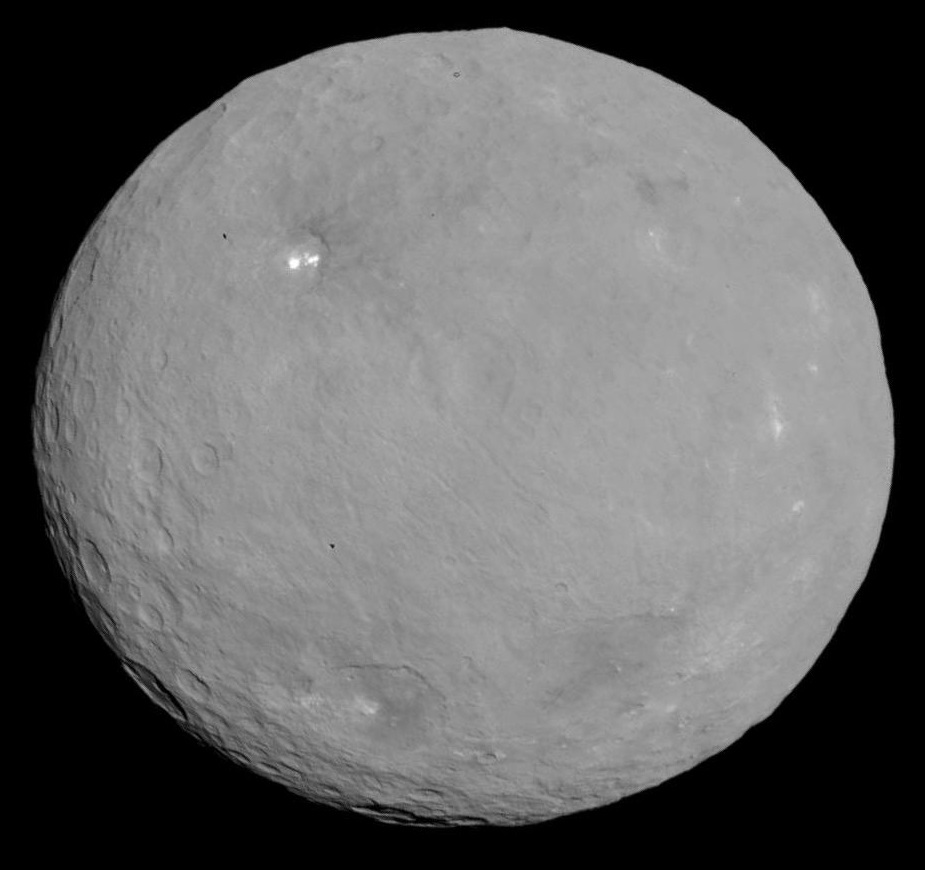G-type Asteroid on:
[Wikipedia]
[Google]
[Amazon]
 G-type asteroids are a relatively uncommon type of
G-type asteroids are a relatively uncommon type of
 G-type asteroids are a relatively uncommon type of
G-type asteroids are a relatively uncommon type of carbon
Carbon () is a chemical element with the symbol C and atomic number 6. It is nonmetallic and tetravalent—its atom making four electrons available to form covalent chemical bonds. It belongs to group 14 of the periodic table. Carbon makes ...
aceous asteroid
An asteroid is a minor planet of the Solar System#Inner solar system, inner Solar System. Sizes and shapes of asteroids vary significantly, ranging from 1-meter rocks to a dwarf planet almost 1000 km in diameter; they are rocky, metallic o ...
that makes up approximately 5% of asteroids. The most notable asteroid in this class is 1 Ceres
Ceres (; minor-planet designation: 1 Ceres) is a dwarf planet in the asteroid belt between the orbits of Mars and Jupiter. It was the first asteroid discovered, on 1 January 1801, by Giuseppe Piazzi at Palermo Astronomical Observatory in S ...
.
Characteristics
Generally similar to the C-type objects, but contain a strongultraviolet
Ultraviolet (UV) is a form of electromagnetic radiation with wavelength from 10 nm (with a corresponding frequency around 30 PHz) to 400 nm (750 THz), shorter than that of visible light, but longer than X-rays. UV radiati ...
absorption feature below 0.5 μm. An absorption feature around 0.7 μm may also be present, which is indicative of phyllosilicate mineral
Silicate minerals are rock-forming minerals made up of silicate groups. They are the largest and most important class of minerals and make up approximately 90 percent of Earth's crust.
In mineralogy, silica (silicon dioxide, ) is usually consi ...
s such as clay
Clay is a type of fine-grained natural soil material containing clay minerals (hydrous aluminium phyllosilicates, e.g. kaolin, Al2 Si2 O5( OH)4).
Clays develop plasticity when wet, due to a molecular film of water surrounding the clay part ...
s or mica
Micas ( ) are a group of silicate minerals whose outstanding physical characteristic is that individual mica crystals can easily be split into extremely thin elastic plates. This characteristic is described as perfect basal cleavage. Mica is ...
.
In the SMASS classification
An asteroid spectral type is assigned to asteroids based on their emission spectrum, color, and sometimes albedo. These types are thought to correspond to an asteroid's surface composition. For small bodies that are not internally differentiat ...
the G-type corresponds to the Cgh and Cg types, depending on the presence or absence (respectively) of the absorption feature at 0.7 μm. The G-type, C-type and some rare types are sometimes collected together into a wider C-group of carbon
Carbon () is a chemical element with the symbol C and atomic number 6. It is nonmetallic and tetravalent—its atom making four electrons available to form covalent chemical bonds. It belongs to group 14 of the periodic table. Carbon makes ...
aceous asteroids.
See also
*Asteroid spectral types
An asteroid spectral type is assigned to asteroids based on their emission spectrum, color, and sometimes albedo. These types are thought to correspond to an asteroid's surface composition. For small bodies that are not internally differentiated ...
References
* D. J. Tholen Asteroid taxonomic classifications in Asteroids III Asteroid spectral classes * {{asteroid-stub